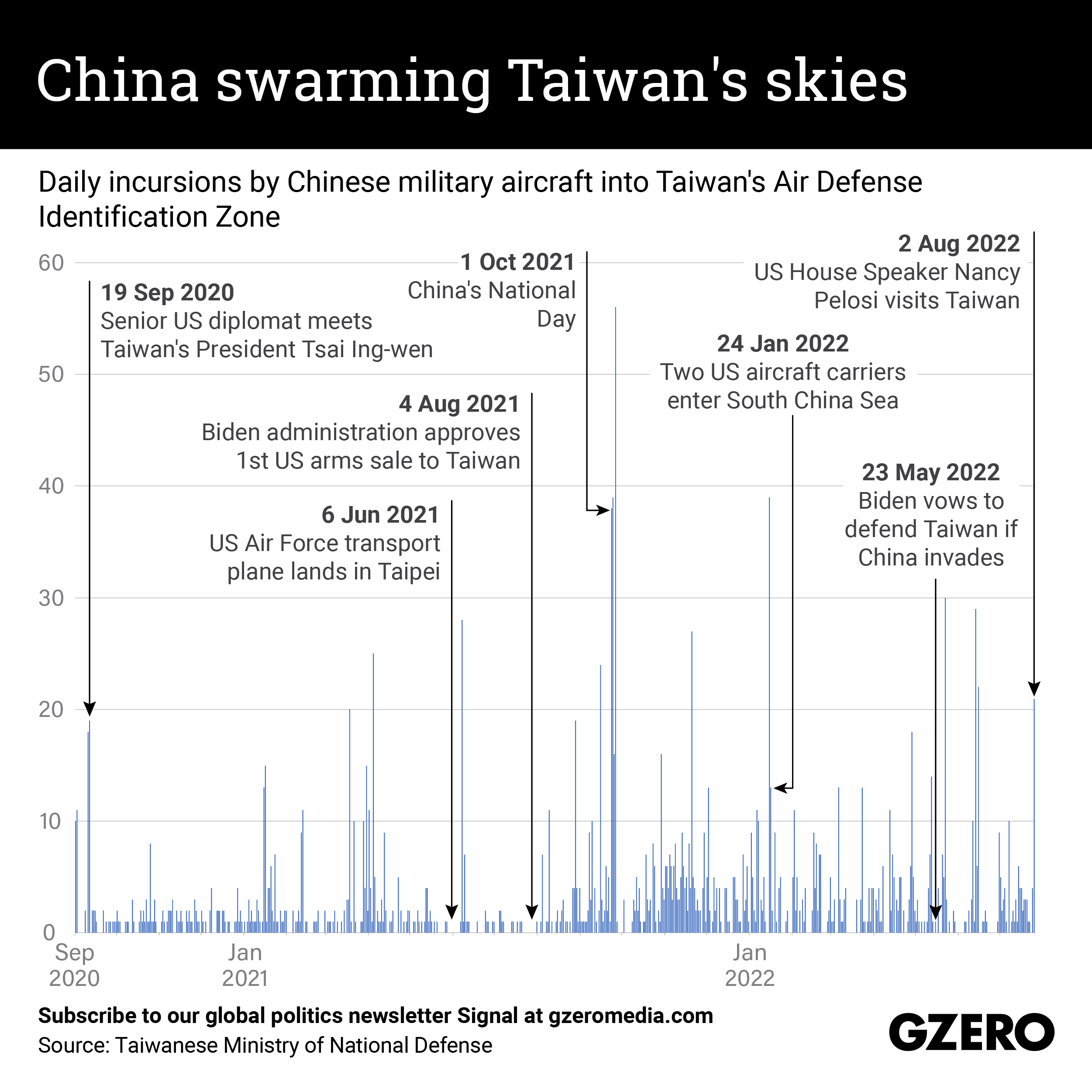August 02, 2022
Nancy Pelosi touched down in Taiwan on Tuesday night, becoming the first US House speaker to visit the self-governing island in 25 years.
After weeks of uncertainty, a lukewarm response from President Joe Biden, Taiwanese jitters, and repeated threats from Beijing, the US military aircraft carrying Pelosi landed in Taipei unharmed. She traveled from Singapore on a much longer route to avoid the South China Sea airspace contested by China.
Still, China made it clear to the world how it feels about the trip by putting on a big show of force, including live-fire drills in waters surrounding Taiwan. Almost on cue, Beijing also scrambled 21 fighter jets into the island's Air Defense Identification Zone, getting very close to the Taiwan Strait median line that limits Taiwanese airspace.
Chinese warplanes have stepped up their incursions into Taiwan’s ADIZ in recent years, with the Taiwanese military reporting almost daily sorties since it started publicly tracking them in September 2020.
Why is this a problem? For one thing, while the incursions don’t violate the island’s airspace, they do drain Taiwan’s resources by forcing its military to be on constant alert and often having to scramble its own jets in response.
For another, flying so close to the demarcation line dramatically raises the odds of human miscalculation. If a Chinese warplane veers even slightly off course and enters Taiwanese airspace, Taipei would have to choose between shooting it down and risking war with China or leaving an act of aggression by its much more powerful neighbor unchecked.
Why is China doing this? Officially, Beijing claims the sorties are regular drills to test the combat readiness of its fighter jets.
Unofficially, they are a tool to respond to perceived slights from Taiwan, the US, and their allies. Incursions tend to pick up after the US or Taiwan do something China doesn't like — such as visits to the island by senior US officials and America selling arms to Taiwan, or ahead of big anniversaries to fan nationalist flames.
So don't be surprised if Taiwan sees a flurry of incursions after Pelosi leaves and during China's 20th Communist Party Congress this fall. We look at how China has stalked the island from the air over the past two years.
More For You
Global conflict was at a record high in 2025, will 2026 be more peaceful? Ian Bremmer talks with CNN’s Clarissa Ward and Comfort Ero of the International Crisis Group on the GZERO World Podcast.
Most Popular
Think you know what's going on around the world? Here's your chance to prove it.
Indian Prime Minister Narendra Modi isn’t necessarily known as the greatest friend of Muslim people, yet his own government is now seeking to build bridges with Afghanistan’s Islamist leaders, the Taliban.
French President Emmanuel Macron, German Chancellor Friedrich Merz, Ukrainian President Volodymyr Zelenskiy, U.S. Special Envoy Steve Witkoff and businessman Jared Kushner, along with NATO Secretary-General Mark Rutte and otherEuropean leaders, pose for a group photo at the Chancellery in Berlin, Germany, December 15, 2025.
Kay Nietfeld/Pool via REUTERS
The European Union just pulled off something that, a year ago, seemed politically impossible: it froze $247 billion in Russian central bank assets indefinitely, stripping the Kremlin of one of its most reliable pressure points.
© 2025 GZERO Media. All Rights Reserved | A Eurasia Group media company.
